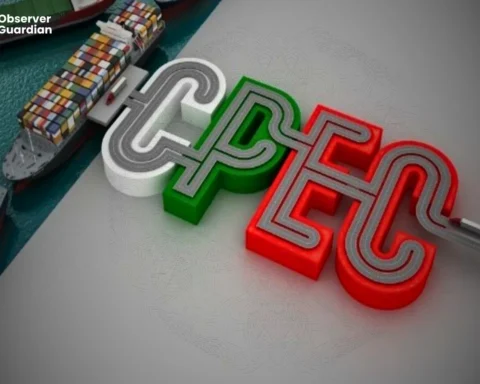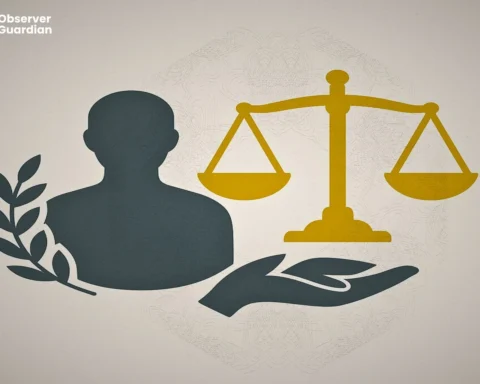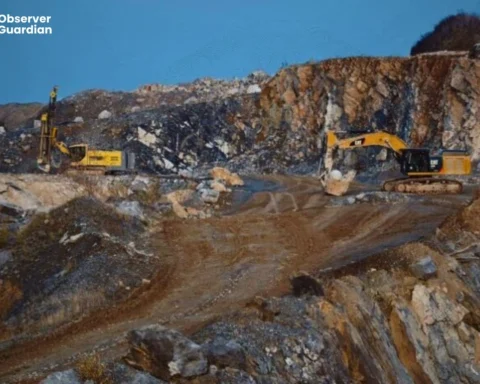In the era of unparalleled digital growth, public debate typically centres on the promise of a cleaner, more sustainable future driven by technology. Digital platforms are being praised as major accelerators of climate solutions from virtual meetings cutting air travel to artificial intelligence improving energy networks. Underneath the surface of elegant interfaces and carbon-neutral commitments, however, is a complicated and often disregarded reality:
The digital economy is based on extractive activities, large energy consumption, and worker exploitation, far from being immaterial and clean. This “green illusion” runs the danger of hiding the pressing need for real climate justice, a framework that transcends emissions control to solve structural imbalances driving social injustice as well as environmental damage.
Digital platforms, be they social media giants, e-commerce behemoths, or cloud computing services, rely mostly on huge infrastructures: data centres, server farms, logistical networks, and rare earth mining. These physical systems are far but ecologically benign. With the rising needs of artificial intelligence and streaming services, data centres alone account for around 1% of world electricity, a proportion expected to expand significantly.
Furthermore, the manufacture of computers, cell phones, and other gadgets relies on heavy resource extraction, usually in areas suffering poor environmental regulations and terrible working conditions. Children and underprivileged laborers labour in hazardous circumstances to harvest cobalt, a necessary component in lithium-ion batteries running modern devices and electric cars, in locations like the Democratic Republic of Congo.
Still, companies keep presenting their activities as part of the climate solution. Green washing marketing strategies highlight circular economy projects, carbon offsets, and procurement of renewable energy. Though these initiatives could have some small advantages, they usually help to hide the more fundamental conflicts of platform capitalism.
For example, carbon offsets usually entail questionable forestry initiatives that do little to offset real emissions and seldom include the whole lifetime emissions of digital services. The idea that we may somehow “offset” our way out of an ecological disaster reveals a technocratic perspective that gives surface-level measurements first priority above institutional transformation.
The green illusion concerns not just emissions but also whose voices are heard and whose are suppressed in determining the digital transformation. While the Global South bears disproportionately more social and environmental consequences of digital consumption, platform monopolies are concentrated in the Global North. For resource extraction, indigenous areas are being invaded; low-wage workers in worldwide supply networks live under dangerous circumstances with no redress.
Concurrently, a few numbers of strong companies and governments decide how digital infrastructures are run, usually without much thought given to people most impacted by environmental damages or climate change. In this regard, digital transformation runs the danger of aggravating rather than improving already existing inequality.
Climate justice calls for a very different strategy, one that questions power systems, prioritizes underprivileged populations, and makes both public and private players responsible for the whole range of their social and environmental effects. This calls for redefining digital platforms as political and material entities entwined with more general systems of exploitation rather than as objective instruments. It also requires dispelling the idea of unceasing innovation as a stand-in for democratic decision-making and shared accountability.
At every level, a climate-just digital future would give sustainability, justice, and openness top priority. This includes funding local and cooperative tech projects, implementing tougher environmental rules on data centres and device makers, and creating technology that benefit society rather than maximize corporate profit.
Not as a charity endeavour but rather as acknowledgment of the right to fully engage in a technologically mediated society, it also entails investing in digital literacy and access in underprivileged groups. Emphasizing justice and fairness will help us to go beyond symbolic gestures toward a really transforming digital change.
Moreover, the discussion of digital technologies and climate has to incorporate work. From content moderators to warehouse workers to miners, the unseen labour running the digital economy needs not just improved working conditions but also a voice in how the systems they support are built.
Coalition building of organized labour, environmental organizations, and digital rights activists will help to demand from platform firms’ openness, fair salaries, and sustainable practices. Reversing the green illusion and creating a fairer and more resilient planet depend on this sort of unity.
The climate disaster is a political and moral as well as a technological one. Digital platforms can and should help to solve it, but only if we are ready to face the hard reality underneath the displays. Though it is enticing to imagine a frictionless, carbon-free digital future based on the backs of the vulnerable and the destruction of the earth is eventually empty.
Re-evaluating digital transformation in the era of climate justice calls for more inquiries, more demand for more responsibility, and more imaginative possibilities. Then and only will we be able to start balancing the demands of justice and sustainability with the promises of technology.







